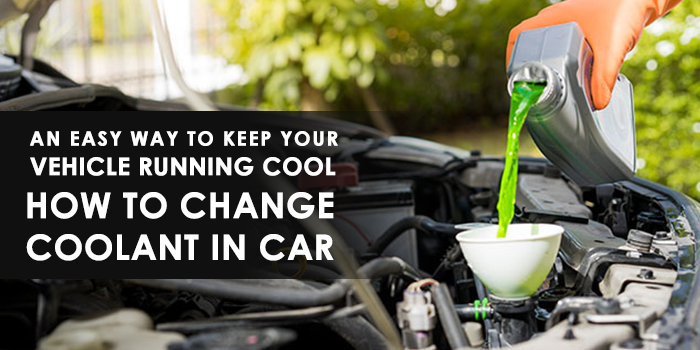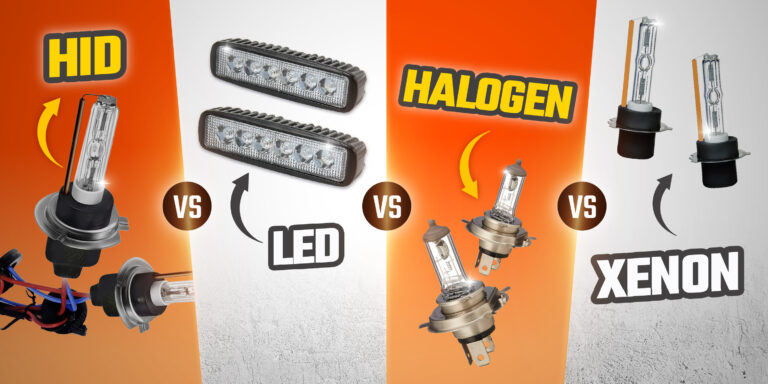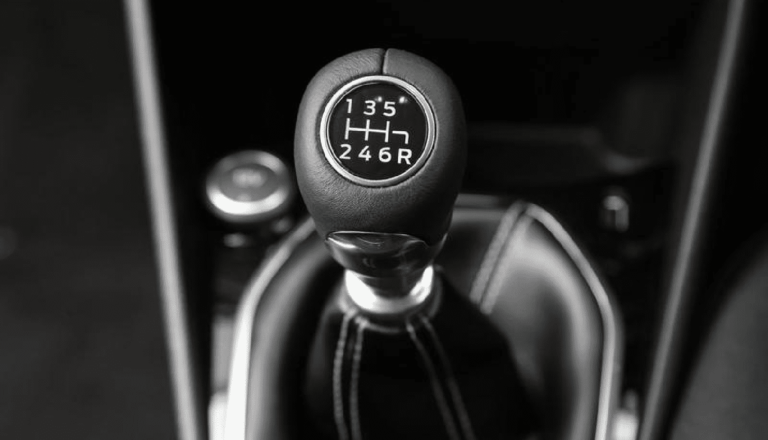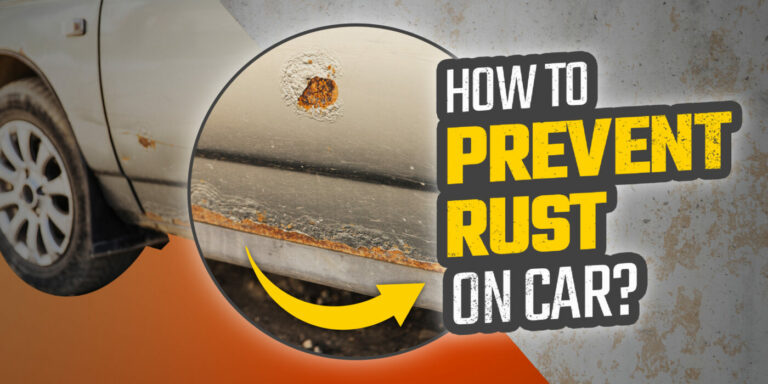
If you haven’t changed your engine coolant in the past year and have already covered 50,000 km since the last coolant replacement, it may be time to refurbish your engine cooling system. Knowing how to change coolant in car can save you some money and a lot of time, and effort in the bargain.
Changing the coolant in your car is a simple procedure and does not require any special technical knowledge. The tools and equipment used in the process are easily available, inexpensive and can be bought at car accessory stores online or at any service station.
Taking care of your engine cooling system will lead to better fuel efficiency, superior cooling, longer engine life and a smoother drive. This article gives you all the information you need on how to change coolant in car.
Inspect Your Engine’s Cooling System
The first thing to do is check the coolant level in the engine. If you find your engine is constantly overheating, has sluggish performance and your radiator keeps blowing steam, then it is most likely a low engine coolant level or time to flush the coolant/antifreeze.
Draw your attention to the coolant reservoir cap. Inspect the coolant with the engine off and ensure it has cooled down before you pop the coolant filler cap. If you find any floating debris, discolouration, dirt particles or anything but a clean liquid, consider changing your coolant.
Also Read How Does Coolant Keep Your Engine Running?
What Are the Benefits of Changing the Coolant?
Engine coolant has several primary functions. The first is to provide heat exchange from the internal combustion engine and dissipate the excess heat through the cooling fins of the radiator. The coolant goes through several cycles of heating and cooling and is capable of absorbing heat effectively.
The coolant is also known as antifreeze because it resists freezing in cold weather. The coolant offers lubrication properties that allow the liquid to flow smoothly through the cooling system and reduce friction in components like the water pump, bearings and water jackets.
Also Read What is a car fuse and how does it work?
The question of when to change coolant in car arises after 50,000 km or around a year of driving. Some coolants have a longer life and don’t require a change for about 2 years. The owner’s manual will provide significant advice on when to change coolant in car.
Engine coolant regulates and maintains optimum engine temperature, reduces chances of corrosion, adds lubrication properties to the components and provides optimum fuel efficiency, smooth driving and extended engine life.
Tools and Equipment Required
The following materials will be used for a coolant change on your car. Keep them handy and follow the steps to complete the procedure without any hassle.
Gloves and Goggles
We use Gloves and goggles because coolant/antifreeze is a hazardous chemical and should not come into contact with your eyes or skin.
A Pan or Container
Use pan or container to collect the old coolant from the radiator drain plug. Dispose of the coolant in a responsible way because it is not biodegradable.
Car Jack
A car jack and jack stands to lift the car and keep it elevated.
Set of Tools
Toolset to unscrew the drain plug and reservoir filler cap.
Also read List of Hand Tools- Be the Mechanic of Your Vehicle Yourself
Towel
Towel to wipe up any excess coolant spills
New Coolant Bottle
A new bottle of coolant to replace the old coolant.
Also read What is power steering fluid and what does it do?
How to Change Coolant in Car?
Changing the engine coolant is an easy process if you follow these steps.
- Park your car on level ground, in a garage or shaded area. Switch the engine off, engage the handbrake and let the motor cool down for about 30 minutes. Once you are sure that the engine is cold, move on to the next step.
- Chock the wheels and Jack Up a Car step by step. Install jack stands to keep the vehicle elevated. Now carefully open the hood and clear away the engine cover, underbody shield.
- Position a large receptacle, empty pan or container beneath the radiator and undo the drain plug of the radiator. Allow the old coolant to freely evacuate from the cooling system and observe the contents for dirt, floating particles or a change of colour. Coolant is usually blue/green in colour, so look for any discolouration.
- Flush the cooling system several times with water until the contents are clear. You can use a professional cooling system flush but water will do just fine. The internal components need to be rid of all corrosion particles or residue from the old coolant.
- There is a coolant reservoir (housed in a transparent container in the engine bay). Remove all remnants of the old coolant. Open the radiator cap and flush it with water several times.
- Reattach the drain plug on the radiator and fill the new coolant till it reaches the full mark. Identify the right brand, type and quantity of coolant/antifreeze from your owner’s manual or manufacturer’s recommendation.
- Start the engine and let it run briefly. Then switch it off and check the level of coolant. Observe if there are any leaks from the radiator, reserve tank or under the body. Top off the coolant to the full mark if required and close the radiator cap.
- Run the engine briefly and look for any changes in engine temperature. The needle should be in the middle of the gauge and there should not be any warning lights on the dashboard.
Also Read The Ultimate Guide To Engine Bay Detailing
Conclusion
An engine’s cooling system relies on coolant/antifreeze as a medium for heat exchange in order to keep the engine running cool and efficient. Good engine health depends on coolant that has been changed at regular intervals and can provide the necessary cooling to internal engine components.
Changing the coolant on your car’s engine is a required maintenance activity that will lead to higher efficiency and keep your engine in optimum condition. Check the maintenance schedule of your vehicle in the owner’s manual and follow the manufacturer’s advice.
You can save considerable time and money by carrying out a coolant change by yourself. A trip to the mechanic will end up costing a lot more and you will have to rely on a technician to change the coolant.
This article describes the steps required to change the coolant in your car. If you found this guide helpful, you may also like to read more about Signs Your CV Axles Are Going Bad and learn how to change the oil at home
Frequently Asked Questions
Q1. Can I change car coolant myself?
Ans. Yes, you can change coolant yourself in about an hour, using simple tools in the comfort of your home garage. Refer to the owner’s manual for advice on the type, band and quantity of coolant/antifreeze to use in your car engine. You will end up saving money and effort by changing car coolant yourself, instead of taking your vehicle to a service centre and paying for consumables and labour. A can of coolant from a reputed brand can be purchased for about Rs.500 -1000 from any service station, car accessory store or online. There is no other special equipment you would require.
Q2. How do I change my coolant?
Ans. Changing car coolant at home is an easy process. First, park your vehicle on level ground in a garage or in a shaded spot. Look for the coolant reservoir cap in the engine bay. The engine should be off and parked for it to cool down. Never try to change the coolant with a hot engine as it may be forced out of the filler cap under pressure. Locate the drain plug in the radiator and allow the old coolant to drain into a pan. Once the old coolant is out of the engine, refit the drain plug and fill the new coolant into the coolant reservoir. Close all caps and start the engine so that the new coolant gets a chance to flow through the engine. Monitor the temperature gauge and look for any signs of overheating.
Q3. How often should you change coolant on car?
Ans. Most manufacturers advise flushing the cooling system and changing the coolant/antifreeze every 50,000 km or at least every year. If the car is driven in severe conditions such as dusty, sandy areas, in stop-and-go traffic or used to tow heavy loads, then the coolant should be changed earlier than the stipulated interval. Changing the coolant after flushing the system reduces the chances of corrosion in the internal components of the engine, leads to better heat exchange while driving and contributes to good fuel economy and long life of the engine.
There are some types of coolant that last for longer, up to 100,000 km or 2 years, so it is a good idea to check the owner’s manual for the right type and brand of coolant to use in your engine.
Q4. Is changing coolant hard?
Ans. Changing the car engine coolant is an easy task, makes use of simple tools and can be done in about an hour without any special knowledge of car maintenance. You need a set of tools like wrenches, pliers and a funnel. Along with that, keep some cleaning towels handy in case you spill the coolant. Antifreeze/coolant can be corrosive to skin and eyes so use gloves and a pair of goggles to protect yourself. Make sure to dispose of the old coolant in a responsible manner because some types of antifreeze are not biodegradable and have to be treated before being washed away. The whole process is usually outlined in detail in the owner’s manual or you can read this article to follow a step-by-step guide to changing car coolant.
Q5. What happens if you don’t flush coolant?
Ans. When driven, car engines heat up to 100 degrees Celsius and when left idle during winter, temperatures may go negative. With constant heating and cooling cycles, the coolant loses its properties of exchanging heat and protecting the internal components of the engine from corrosion or rust. Coolant, therefore, deteriorates over time and may not be an effective medium for heat exchange which is its primary purpose. Antifreeze levels also go down resulting in adequate liquid flowing through the system. If you do not flush the coolant at least once a year, the coolant can end up getting acidic and won’t prevent rust or corrosion. There could be potential damage to the thermostat sensors, fine tubing in the radiator, water pump, hoses, radiator and water jackets. A good coolant flush will rid the internal components of any potential damage and allow the new coolant to work efficiently, lubricating all the engine cooling system parts.
Q6. How much does it cost to change the coolant?
Ans. Popular brands of coolant include Shell, Bosch, Motul, Castrol and AC Delco. A 1-litre bottle of coolant can be purchased for under Rs.300 at most car accessory stores, service stations or online. You might as well invest in an engine coolant flush for around Rs.200 to clean the cooling system before you add in the new coolant. Old coolant leaves residue and floating particles in the tubes that can cause blockages and contaminate the new coolant. Include the cost of labour at the mechanic for professional services and the whole procedure can be completed for Rs.1000.
Changing the coolant at home by yourself will be more cost-effective as you will end up saving on servicing costs at the shop.
Q7. Do you really need to flush coolant?
Ans. A coolant flush provides many benefits to your engine cooling system and should be carried out at least once a year. The coolant flush gets rid of scale deposits, dirt and rust which lead to overheating, blockage and damage to the cooling system components. The new coolant will be able to work more efficiently in heat exchange, lubrication and engine protection if you use a coolant flush prior to its replacement. A coolant flush will remove acidity from the cooling system which is the main cause of corrosion of the bearings, and deterioration of the water pump and hoses. You need to flush the coolant to check for leaks and other potential problems in the radiator.
Q8. How long does it take to change coolant in car?
Ans. Changing the coolant in a car should not take more than 2 hours. It is just a matter of having all your tools and equipment at hand. A trained service technician can finish the job in 30 – 45 minutes, but since you may be new to this kind of work it may take you a little longer. Service mechanics also have power tools like air compressors and pressurised coolant flush that can evacuate the engine cooling system in minutes. Doing this same job at home will take longer because you have to rely on gravity to drain the system.








